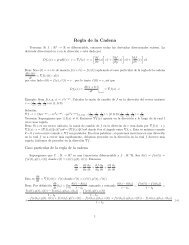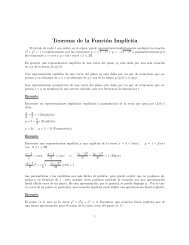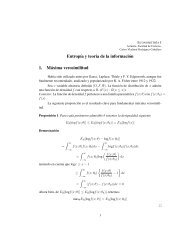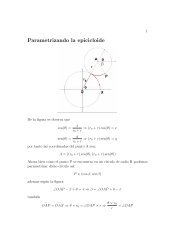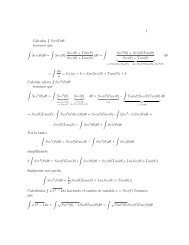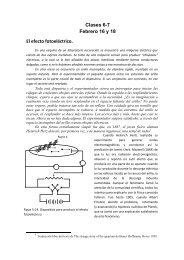"Surely You're Joking, Mr. Feynman!" - unam.
"Surely You're Joking, Mr. Feynman!" - unam.
"Surely You're Joking, Mr. Feynman!" - unam.
You also want an ePaper? Increase the reach of your titles
YUMPU automatically turns print PDFs into web optimized ePapers that Google loves.
then there were multiples of 13 x 2920 for a while, and then funny numbers! They were<br />
errors, as far as I could tell. Only many years later did I figure out what they were.<br />
Because figures denoting days were associated with this 584 which was divided<br />
up so peculiarly, I figured if it wasn't some mythical period of some sort, it might be<br />
something astronomical. Finally I went down to the astronomy library and looked it up,<br />
and found that 583.92 days is the period of Venus as it appears from the earth. Then the<br />
236, 90, 250, 8 became apparent: it must be the phases that Venus goes through. It's a<br />
morning star, then it can't be seen (it's on the far side of the sun); then it's an evening star,<br />
and finally it disappears again (it's between the earth and the sun). The 90 and the 8 are<br />
different because Venus moves more slowly through the sky when it is on the far side of<br />
the sun compared to when it passes between the earth and the sun. The difference<br />
between the 236 and the 250 might indicate a difference between the eastern and western<br />
horizons in Maya land.<br />
I discovered another table nearby that had periods of 11,959 days. This turned out<br />
to be a table for predicting lunar eclipses. Still another table had multiples of 91 in<br />
descending order. I never did figure that one out (nor has anyone else).<br />
When I had worked out as much as I could, I finally decided to look at the<br />
Spanish commentary to see how much I was able to figure out. It was complete nonsense.<br />
This symbol was Saturn, this symbol was a god it didn't make the slightest bit of sense.<br />
So I didn't have to have covered the commentary; I wouldn't have learned anything from<br />
it anyway.<br />
After that I began to read a lot about the Mayans, and found that the great man in<br />
this business was Eric Thompson, some of whose books I now have.<br />
When Nina Byers called me up I realized that I had lost my copy of the Dresden<br />
Codex. (I had lent it to <strong>Mr</strong>s. H. E. Robertson, who had found a Mayan codex in an old<br />
trunk of an antique dealer in Paris. She had brought it back to Pasadena for me to look at<br />
I still remember driving home with it on the front seat of my car, thinking, "I've gotta<br />
be careful driving: I've got the new codex" but as soon as I looked at it carefully, I<br />
could see immediately that it was a complete fake. After a little bit of work I could find<br />
where each picture in the new codex had come from in the Dresden Codex. So I lent her<br />
my book to show her, and I eventually forgot she had it.) So the librarians at UCLA<br />
worked very hard to find another copy of Villacorta's rendition of the Dresden Codex,<br />
and lent it to me.<br />
I did all the calculations all over again, and in fact I got a little bit further than I<br />
did before: I figured out that those "funny numbers" which I thought before were errors<br />
were really integer multiples of something closer to the correct period (583.923) the<br />
Mayans had realized that 584 wasn't exactly right!*<br />
*While I was studying this table of corrections for the period of Venus, I discovered a rare<br />
exaggeration by <strong>Mr</strong>. Thompson. He wrote that by looking at the table, you can deduce how the<br />
Mayans calculated the correct period of Venus use this number four times and that difference<br />
once and you get an accuracy of one day in 4000 years, which is really quite remarkable,<br />
especially since the Mayans observed for only a few hundred years.<br />
Thompson happened to pick a combination which fit what he thought was the right period<br />
for Venus, 583.92. But when you put in a more exact figure, something like 583.923, you find the<br />
Mayans were off by more. Of course, by choosing a different combination you can get the<br />
numbers in the table to give you 583.923 with the same remarkable accuracy!




